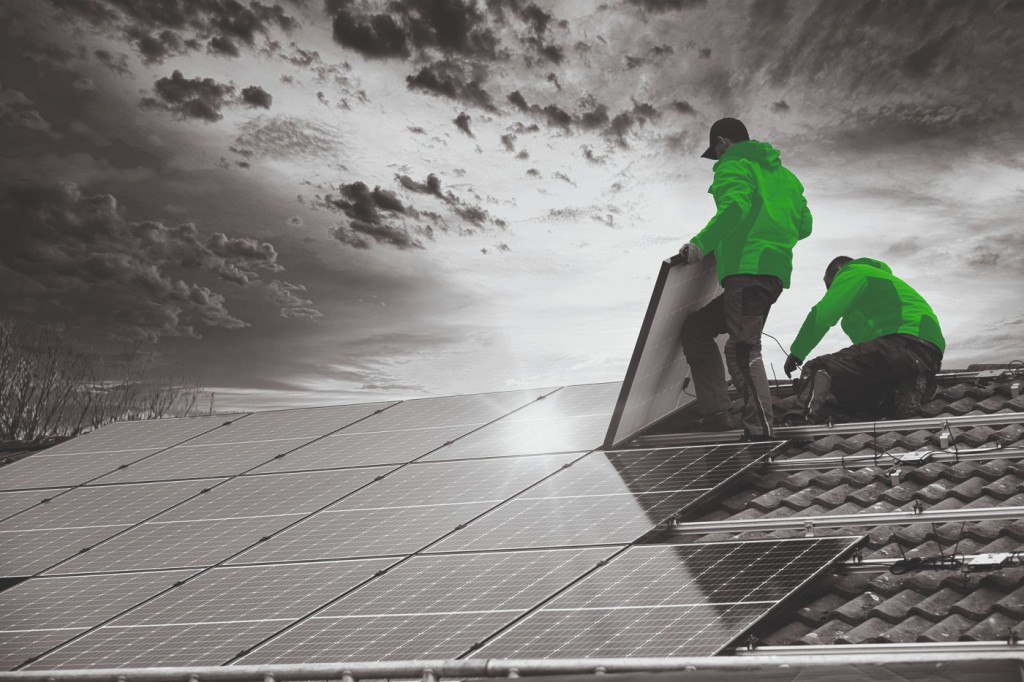Fast-tracking low-carbon tech projects

Karolina Younger, Chief Product Officer at Jumptech, explains how installation technology can enable contractors, installers, project managers and M&E professionals more confidence to install low-carbon technology at scale.
With the increased appetite for using low-carbon technology in new and existing UK building stock, business owners, developers, energy managers and facilities managers are looking to install more EV charge points, solar panels, battery storage and heat pumps than ever.
The UK government’s commitment to reducing greenhouse gas emissions by 100% from 1990 levels by 2050 has understandably raised the profile of low-carbon technologies. It’s no longer just eco-conscious organisations who are looking to install low-carbon tech in their facilities. The reality of net zero is driving behaviour change and is behind an explosion in demand for EV charging, solar PV panels, heat pumps and battery storage systems.
According to the Committee on Climate Change, direct emissions from non-domestic building stock accounts for almost 5% of the UK’s total emissions alone. To combat such figures, there needs to be a massive ramp-up in installations, which seems to be good news for the installation industry.
Installers are in huge demand to install low carbon technologies, all of which come with their own challenges. Compound this with a shortage of skilled electrical engineers and complex, rapidly-evolving technical and regulatory landscapes, and developers and project managers potentially have a real battle on their hands. For energy and facilities managers, this means delays and disruption to their low-carbon initiatives, risking deadlines, service level agreements (SLA) and other key targets.
As the market for installing low-carbon technologies has matured, installation specialists have had to navigate complex finance, regulation and technology environments. These are all time consuming, and they keep changing as they evolve.
Keeping up with the building requirements for solar installations, and the financial incentives for stand-alone battery storage or battery and solar combos alone is an uphill battle. Coordinating with utility companies and DNOs to obtain grid connection approvals adds more complexity. It also seems that every day brings new advancements, certainly in battery technology.
Juggling changing requirements and keeping abreast of the latest tech is a full-time job in itself.
Low-carbon installation management platforms are capable of changing this by streamlining workflows, simplifying project management, and aligning all key stakeholders for smooth-running projects that are on time and effortless.
Retrofitting means disruption
In December 2023, the UK Government opened consultation on its Future Buildings Standards, intended to establish energy efficiency, ventilation, and sustainability standards for newly built non-domestic buildings.
While this takes care of future builds, about 80% of the buildings that will be around in 2050, the timeframe for net zero, have already been built. This means facilities managers or commercial landlords will be looking to retrofit low-carbon devices and technologies in buildings not designed for them.
When it comes to retrofitting, every site is different and every installation has unique challenges. Any installation process has to be both standardised to ensure the installation company can maximise efficiency and flexible enough to allow for any changes that can and will occur.
From business parks to fleet depots, there’s no doubt that installing low-carbon technologies is disruptive for most businesses. Compared to installing solar PV, batteries and especially heat pumps, EV charge point installations are a relative breeze.

Keeping stakeholders happy throughout the whole process calls for exemplary coordination and communication. With so many moving parts to a clean tech installation, installers need to be at the top of their game to keep clients happy and keep up with growing demand. As a result, many are turning to digitalised installation management platforms that guide all stakeholders, from installers to facilities managers and project developers, through the process.
Solutions for installations
Technology that supports the installation of low-carbon systems in commercial settings is revolutionising the operational efficiency of installers. Software platforms that map the installation journey have proved instrumental in streamlining field operations, strengthening communication and collaboration among different parties and empowering clients with knowledge and active participation in the process.
Such platforms offer digitised structured workflows, simplified administration processes and centralised data hubs that track vital project details and head off potential problems.
Green tech installation technology like that provided by Jumptech involves clients by prompting for key information and communicating directly on things like the installation date for equipment, who will be installing it, and what to expect.
With a comprehensive workflow of every element of the installation project, the software platform removes the risk of details being forgotten or falling through the cracks which are the very things that can derail an installation and stop facilities and project managers from keeping their low-carbon transition projects on track.
The benefits of using installation management software are felt across the whole installation experience, from the survey and quotation through to warranty registration and client onboarding and activation. A centralised management system delivers a customised approach for each work site. The platform ensures that the service delivery from the installer is consistent, while maintaining high-quality standards. A centralised system also alleviates the administrative load for project or facilities managers stemming from countless emails, phone calls, and photo exchanges, making the whole process more efficient and accurate.
Solar and battery installations are made more efficient and effective through the thorough and accurate recording of details of aspects like scaffolding requirements, roofing status, and electrical installation for comprehensive documentation. The software also guides project documentation including MCS, DNO and installation documents from the first to third fix stages, throughout the process. From a practical perspective, installers and contractors are kept constantly ‘job-ready’ with visual reminders of the essential items needed for each work site. A multi-tool, multi-job app guides each trade through their tasks and collects vital on-site information. While, back at the office, quoting and invoicing efficiency is maximised by integration of accounting and operations management systems.
Avoid engineer return visits
In a scenario where so much can potentially go wrong, installers of low-carbon technologies need to get everything right first time, or as close to first time as possible. As the market matures, competition will grow, and margins will shrink.
What’s more, with a limited talent pool of qualified electrical installation engineers, installation companies cannot afford to send engineers back to check details or fix errors that needn’t have occurred in the first place. Using installation management software that keeps track of every detail and guides you through a safe, compliant, and effective installation just makes commercial and environmental sense.
As we move towards a net zero future, there will be great opportunities for M&E professionals to transform the UK’s varied commercial building stock to low-carbon technology. Those that take advantage of advanced technology will be able to do so in the most efficient and effective way, with installers, tradespeople, facilities and energy managers aligned through simple, powerful platforms.







